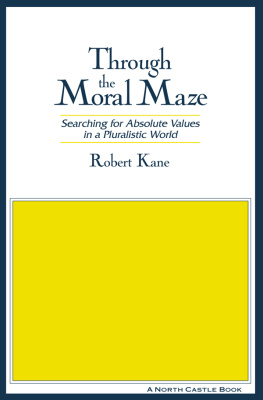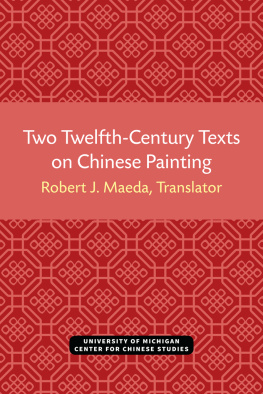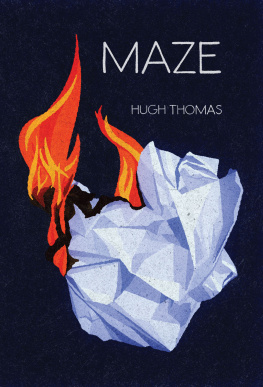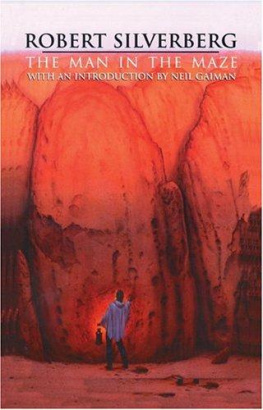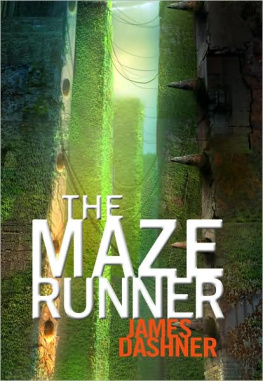Copyright 1957 by N. V. Uitgeverij W. van Hoeve
The Hague - Netherlands
All rights reserved. Originally published 1956
University of Chicago Press Edition 1997
Printed in the United States of America
09 08 07 6 5 4 3
Gulik, Robert Hans van, 19101967.
The Chinese maze murders : a Chinese detective story suggested by three original ancient Chinese plots / by Robert Van Gulik ; with nineteen plates drawn by the author in Chinese style.
p. cm.
A Judge Dee mystery.
ISBN 0-226-84878-7 (alk. paper)
1. Deejen-Djieh (Fictitious character) Fiction. 2. JudgesChinaFiction. I. Title.
FOREWORD
AFTER the appearance of my translation of the old Chinese detective novel Dee Goong An I was asked to search for other Chinese novels of that kind. However, such books are now rather scarce and moreover it proved difficult to find one that appeals equally to modern Chinese and Western taste. As a matter of fact, Dee Goong An is an exception. As a rule style and contents of ancient Chinese crime and mystery stories differ so much from modern ones that they are of slight interest to the present-day Oriental reader, and even less to the Westerner.
On the other hand old Chinese crime stories contain many clever plots and much material relating to the detection of crime. I thought, therefore, that it would be an interesting experiment to write a Chinese-style detective story myself, utilizing plots found in Chinese stories from bygone times.
I engaged upon this experiment mainly in order to prove to present-day Chinese and Japanese authors that it is possible to write a detective-novel in traditional Chinese style that yet appeals to the modern Oriental reader. I thought this all the more worth while since at present the book-market in China and Japan is flooded with bad translations of third-rate foreign thrillers, while their own ancient crime novels are practically forgotten. When I had completed my English manuscript of The Chinese Maze Murders, it was translated into Japanese by Professor Ogaeri Yukio, and published in 1951 by the Kodan-sha in Tokyo, under the title Meiro-no-satsujin, with a preface by the well known Japanese mystery writer Edogawa Rampo. Then I myself prepared a Chinese version, which was published in 1953 by the Nanyang Press in Singapore, under the title Ti-jen-chieh-chi-an. Both editions were favourably received in the Chinese and Japanese press. Encouraged by this success I wrote two more Judge Dee novels, The Chinese Bell Murders and The Chinese Lake Murders, of which a Chinese and Japanese version is now in preparation.
Having thus attained my main object, it occurred to me that also Western readers might perhaps be interested in this new type of crime novel. Therefore I decided to publish my English text of The Chinese Maze Murders, an additional motive being that the Chinese element has been introduced so often by Western writers of detective stories that I thought that the reader might be interested in seeing how it looks in genuine Chinese garb.
For information on the background of the present novel and the Chinese sources utilized the reader is referred to my Postscript at the end of the book. Here it may suffice to say that I borrowed three plots from ancient Chinese sources, rewriting them as one continuous story centering round the famous ancient Chinese master-detective Judge Dee. I retained the typical features of old Chinese detective novels, such as the prologue which gives some idea of the main events of the story itself, the headings in two parallel lines, the peculiar Chinese device of letting the detective solve a number of cases simultaneously, etc., and in general tried to preserve as much as possible Chinese style and atmosphere.
The scene of my story is laid in Lan-fang, an imaginary border town of China during the seventh century A.D. The reader will find a Chinese map of that city on page xiv of the present publication. The plates were drawn by me in the style of book-illustrations of the Ming Dynasty.
All the credit of what may be found satisfactory in this novel must go to the ancient Chinese writers who evolved the plots. All its shortcomings must be blamed on the present author.
The Hague, spring 1956
ROBERT VAN GULIK
Dee Goong An, three murder cases solved by Judge Dee. An old Chinese detective novel translated from the original Chinese with an introduction and notes, by R. H. van Gulik, Litt.D.; one illustrated vol. publ. Tokyo 1949.
DRAMATIS PERSONAE
It should be noted that in Chinese the surname, here printed in capitals, precedes the personal name.
Main Characters:
DEE Jen-djieh, newly appointed magistrate of Lan-fang, a town district on the Northwest border of the Chinese Empire. Referred to as Judge Dee, or the judge.
HOONG Liang, Judge Dee's confidential adviser and sergeant over the constables of the tribunal. Referred to as Sergeant Hoong, or the sergeant.
MA Joong, TAo Gan and CHIAO Tai the tree trusted lieutenants of Judge Dee
Persons connected with The Murder in the Sealed Room:
DING Hoo-gwo, a General living retired in Lan-fang. Found murdered in his own library.
DING Yee, a Junior Candidate of Literature, his only son. Referred to as Candidate Ding, or Young Ding.
WOO Feng, son of Commander Woo of the Board of Military Affairs in the capital. A Junior Candidate of Literature and amateur painter.
Persons connected with The Hidden Testament:
Yoo Shou-chien, an ex-Governor who died while living retired in Lan-Fang.
Mrs. Yoo, ne MEI, the Governor's young second wife.
Mrs. LEE, a painter, friend of Mrs. Yoo.
Yoo Kee, the Governor's eldest son by his first wife.
Yoo Shan, infant son of Mrs. Yoo.
Persons connected with The Girl with the Severed Head:
FANG, a blacksmith. Later appointed headman of the constables of the tribunal, and hence referred to as Headman Fang or the headman.
White Orchid, his eldest daughter.
Dark Orchid, his second daughter.
His son.
Others:
CHIEN Mow, the local tyrant who usurped power in Lan-fang.
LIU Wan-fang, his eldest counsellor.
Corporal LING, a deserter from the regular army, reinstated by Judge Dee.
Orolakchee, an Uigur chieftain. His real name is Prince Ooljin. His false name Orolakchee means agent or representative.
The Hunter, accomplice of Orolakchee.
Tulbee, an Uigur girl.
Occurs in only:
Master Crane Robe, an old recluse.
LIST OF ILLUSTRATIONS
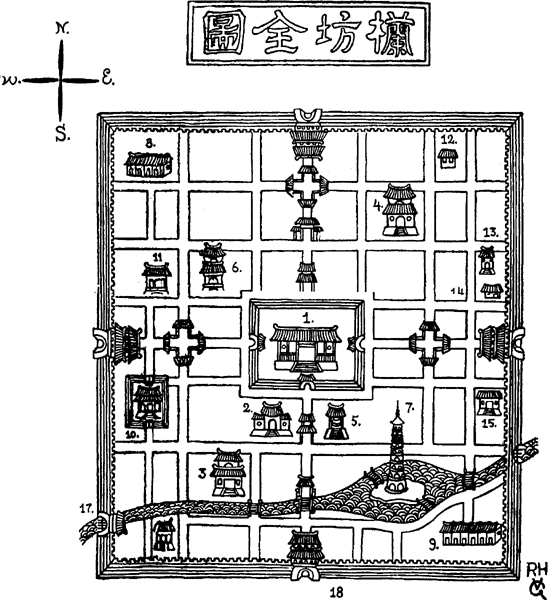
SKETCH MAP OF LAN-FANG
1. Tribunal



